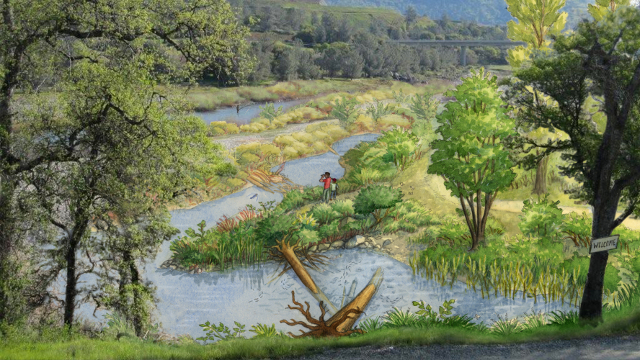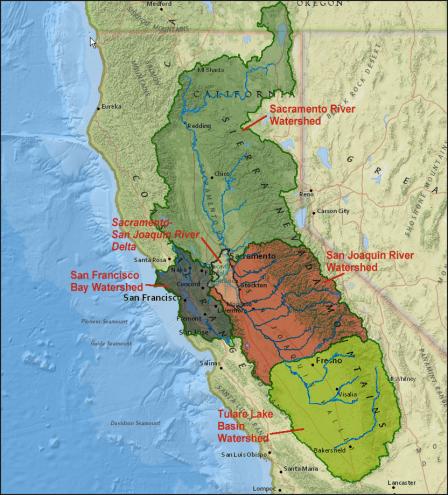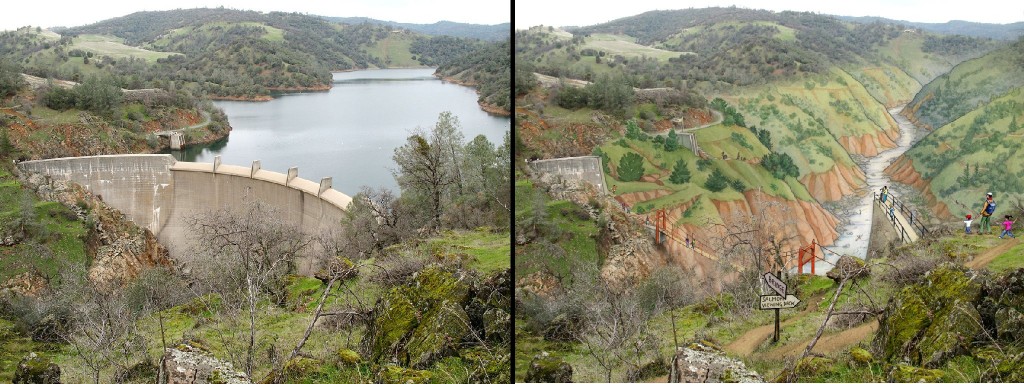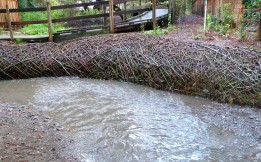
Karl Cronin, an angular young man with hair like marsh grass, walked onto the stage, pushed up his sleeves, and began sculpting the air to a soundtrack of birds, wind, and water. Then, joined by three violins and a cello, he transformed us all into water molecules. We kept company in a reservoir, evaporated into rain, and became groundwater:
how we sank
how we fell
how we learned of the mineral
how we learned of the root
the Willow, the Poplar, the Dogwood
the fecund beauty of this boundless decay
the great yield of soil
given life by our motion
through the pores of breathing stones

This striking performance opened the fourth Bay Area Art and Science Interdisciplinary Collaborative Session (BAASICS.4) at ODC Theater in San Francisco on January 18th. It was an evening of presentations by artists and scientists—many of whom blur the distinction—about the San Francisco Bay Delta Watershed.
Watersheds are a type of geographic organization—but that makes them sound so (if you’ll forgive the expression) dry. They are tapestries of interwoven lives—that’s better. All life depends on water, and all water flows to the sea. A watershed contains all the land whose rainfall eventually joins the ocean at a single outlet: for example, under the Golden Gate Bridge.
The San Francisco Bay Delta watershed (so named because the waters of the Sacramento River and the San Joaquin River pool in an inland delta before flowing out to the Bay) is enormous. It stretches from Oregon to Bakersfield. It has also been enormously altered, from the days of industrial gold mining to the re-engineering of the Central Valley for large-scale agriculture.

